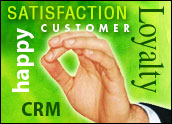
The facts about today’s customers are well established: They know more about your business than ever before, they’re talking to their peers and to the wider public about you, they want to be communicated with through the channels of their choosing, and they desire to have a more partner-like relationship with your company.
So, what are you going to do about it?
The answer to that is what many of the attendees are trying to find answers to at the Gartner Customer 360 Summit, which was held this week in Los Angeles. Rather than a technology conference, this event could be described as a human behavior conference, and the behavior being discussed takes place on both sides of the vendor-customer equation.
Who Cares About Customer Experience?
The problem in most companies, said Gartner Vice President and Distinguished Analyst Ed Thompson, is that “most employees don’t care a damn about customer experience.” Employees have been so effectively siloed and indoctrinated to do specific tasks that the overriding belief among many employees is that customer experience is someone else’s problem. Sales and marketing certainly have to think about it, but many other employees cling to a myopic and outdated idea of how their jobs affect customers, for good and for bad.
The reality is that customer experience can be impacted by everyone in the company. As an example, Thompson said, the biggest drop in customers’ rating of their experiences came in 1997 and 1998 and could be directly correlated to changes in many companies’ supply chains during that period, which disrupted deliveries and damaged the expectations of many customers.
That had nothing to do with sales, marketing or the customer service departments. It had to do with others in the company making changes without anticipating how they could impact the customer.
Taught From the Moment of Hire
How do you create a workforce that puts the customer experience first? Thompson suggested two alternatives: “You could train people to be nice,” or you could make customer experience a more critical priority during the hiring process, so that over time your workforce becomes increasingly aware of the customer, regardless of their roles within your organization.
You also need to alter your company’s processes to focus more on customer experience. Gartner Analyst Michael Maoz suggested that marketing and customer care should be combined into one organization, an idea that makes a lot of sense but will entail a lot of hard work, persistence and probably some convincing of C-level executives — more work with people.
Rather than invest in increased branding of your company, Maoz said, it’s important to realize that “the customer is the brand,” he said. Instead of reinforcing your own brand, “if you can reinforce the customer’s brand, you’ll have a customer for life,” he said.
While the technology is now available to help with these customer-centric initiatives, the first steps must be to stop, think about the customer’s needs, then develop a plan and some processes people can execute against. Only then should the technology be brought to bear.
Sure, the technology allows these conversations to happen, and the customer surely could not have become the social customer without it. But good customer experiences existed before the technology and before the social customer, and it doesn’t happen because of technology. It happens because people have put thought into what customers want and expect — and that’s something any business should be doing anyway.
CRM Buyer columnist Chris Bucholtz blogs about CRM at Forecasting Clouds. He has been a technology journalist for 15 years and has immersed himself in the world of CRM since 2006. When he’s not wearing his business and technology geek hat, he’s wearing his airplane geek hat; he’s written two books on World War II aviation, and his next two are slated for publication in 2010.




















































